Abstract
OBJECTIVE: To determine the effect of the Program for Assertive Community Treatment (PACT) model on psychiatric inpatient service use in a population of non-emergency psychiatric patients with severe chronic mental illness, and to test for variations in this effect with program staffing levels and patient characteristics such as race and age. DATA SOURCES/STUDY SETTING: Data are taken from a randomized trial of PACT in Charleston, South Carolina for 144 patients recruited from August 1989 through July 1991. STUDY DESIGN: Subjects were randomly assigned either to one of two PACT programs or to usual care at a local mental health center. Effects on hospital use were measured over an 18-month follow-up period via multiple regression analysis. DATA COLLECTION METHODS: Data were obtained from Medicaid claims, chart reviews, subject, case manager, and family interviews; searches of the computerized patient and financial databases of the South Carolina Department of Mental Health and relevant hospitals; and searches of the hard copy and computerized financial databases of the two major local hospitals providing inpatient psychiatric care. PRINCIPAL FINDINGS: PACT participants were about 40 percent less likely to be hospitalized during the follow-up period. The effect was stronger for older patients. Lower PACT client/staff ratios also reduced the risk of hospitalization. No evidence of differential race effects was found. Given some hospital use, PACT did not influence the number of days of use. CONCLUSIONS: Controlling for other covariates, PACT significantly reduces hospitalizations but the size of this effect varies with patient and program characteristics. This study shows that previous results on PACT can be applied to non-emergency patients even when the control condition is an up-to-date CMHC office-based case management program.
Full text
PDF

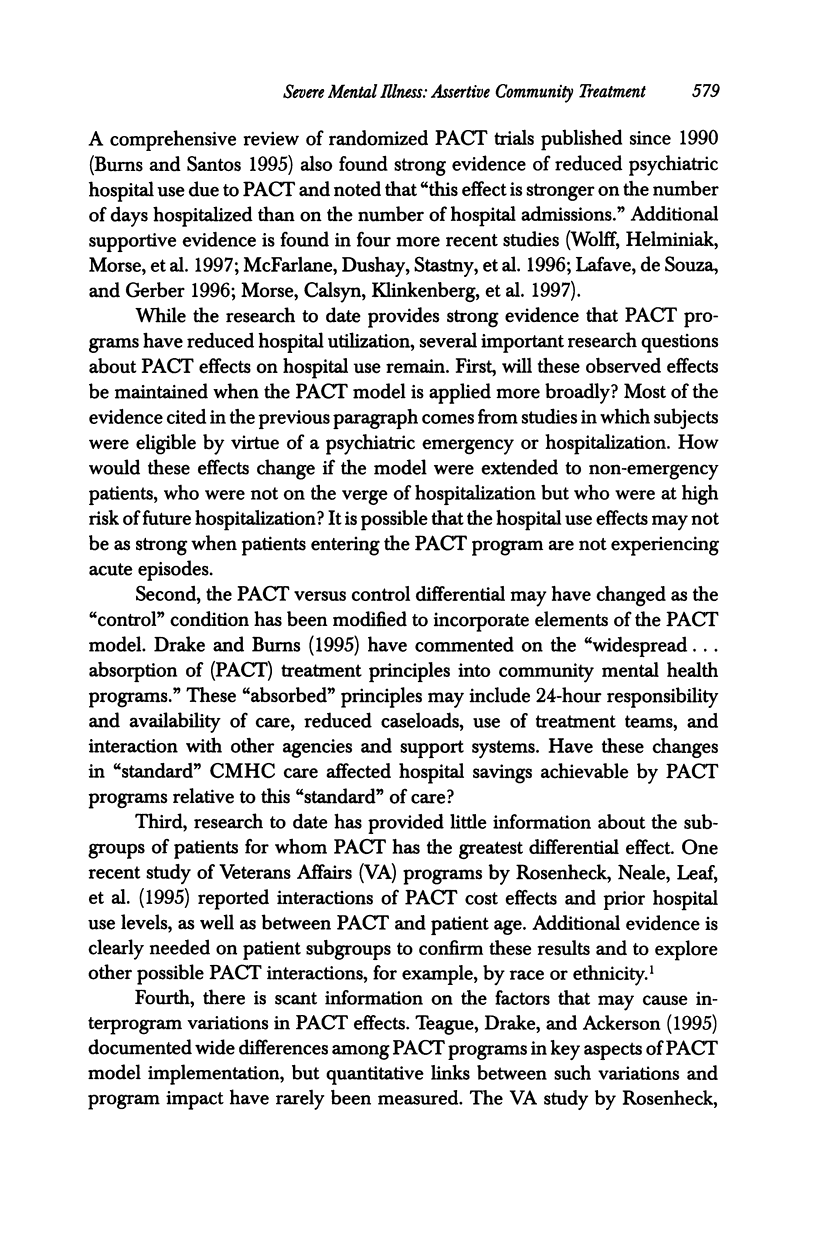


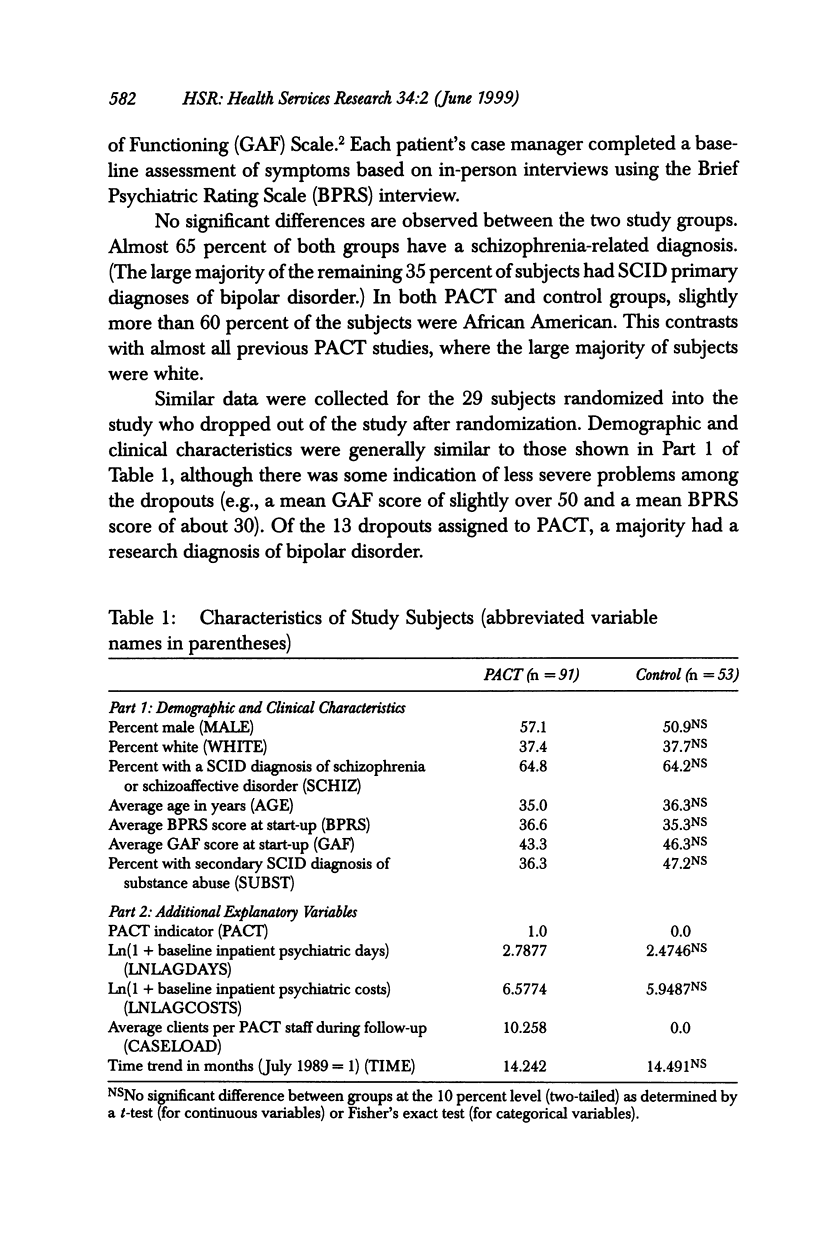
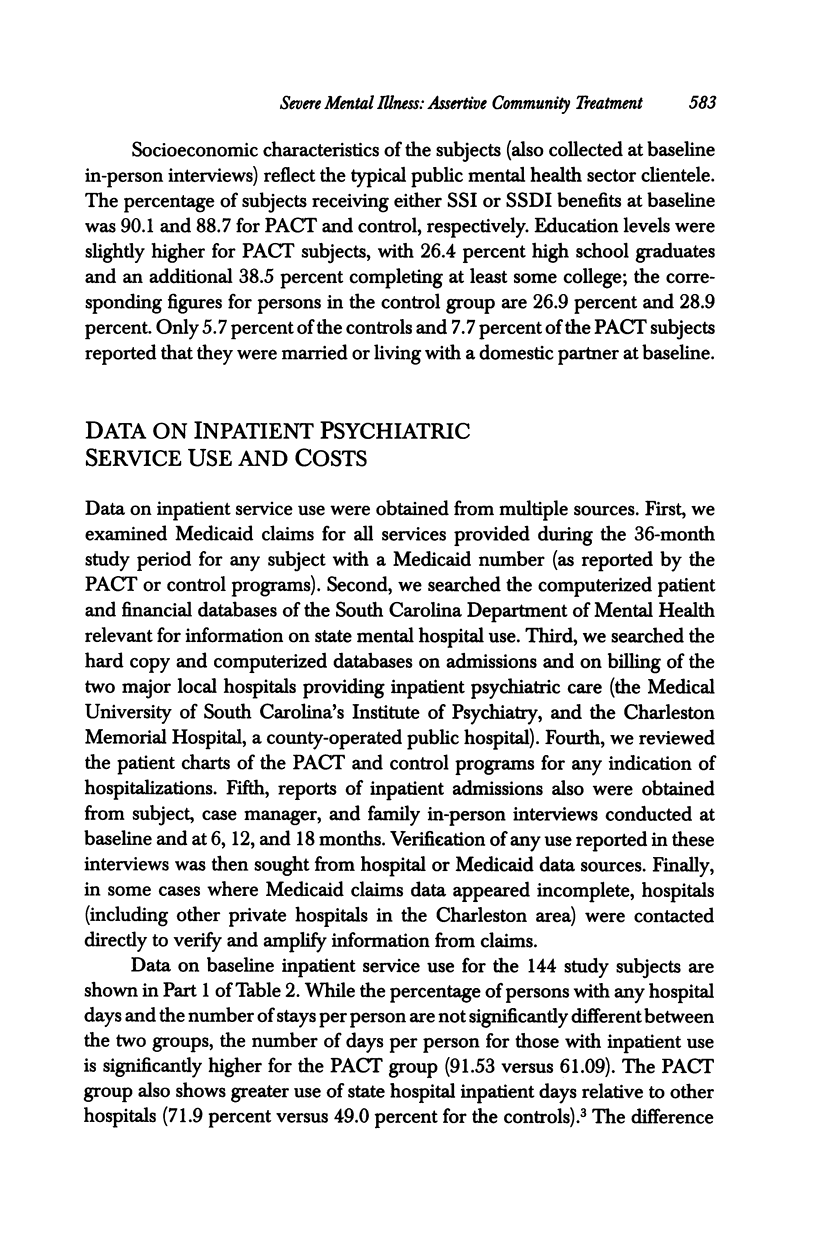
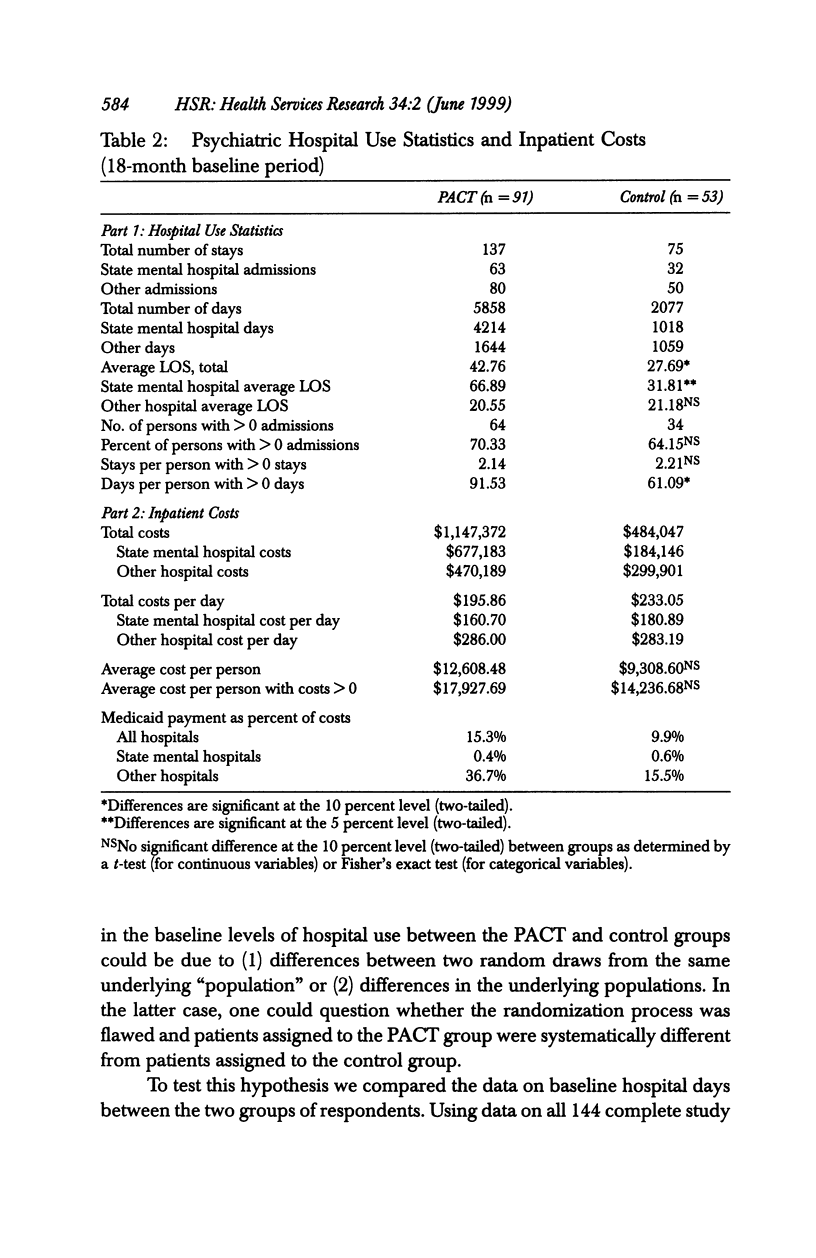

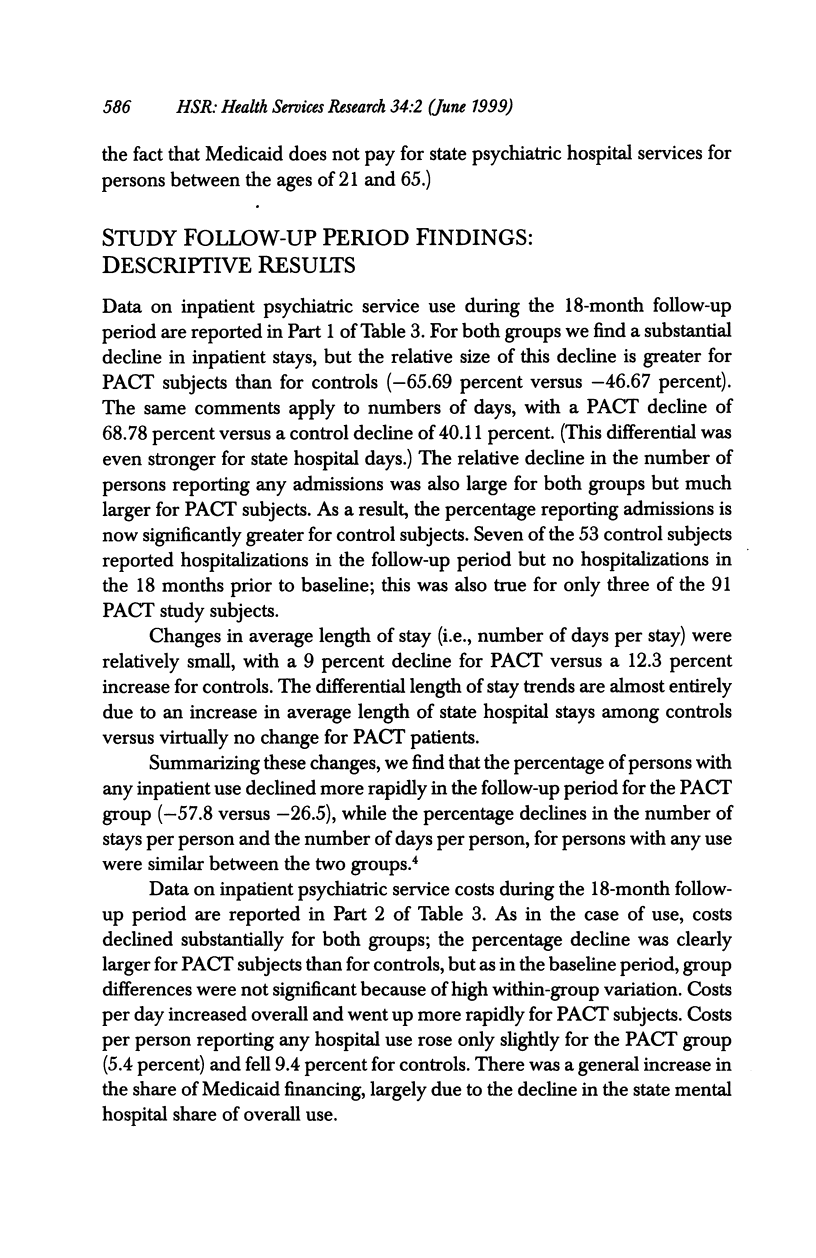



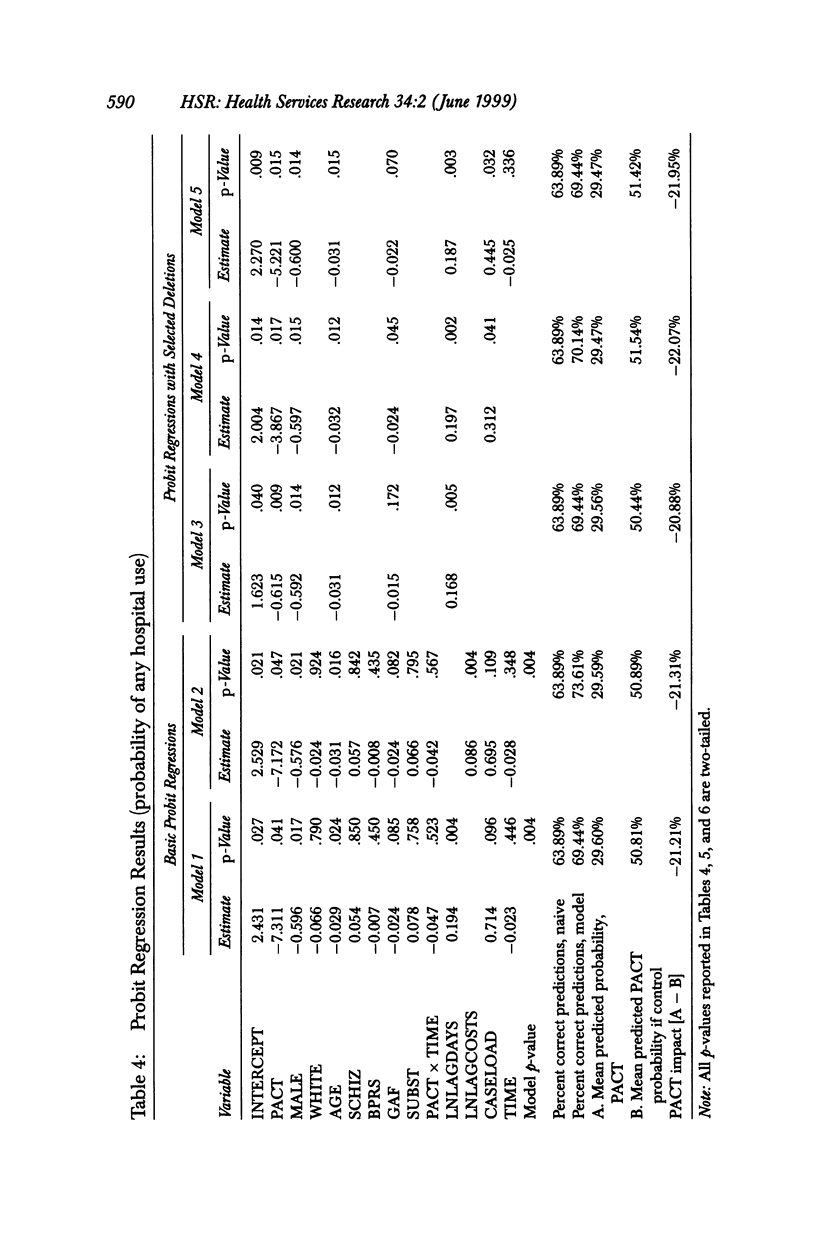
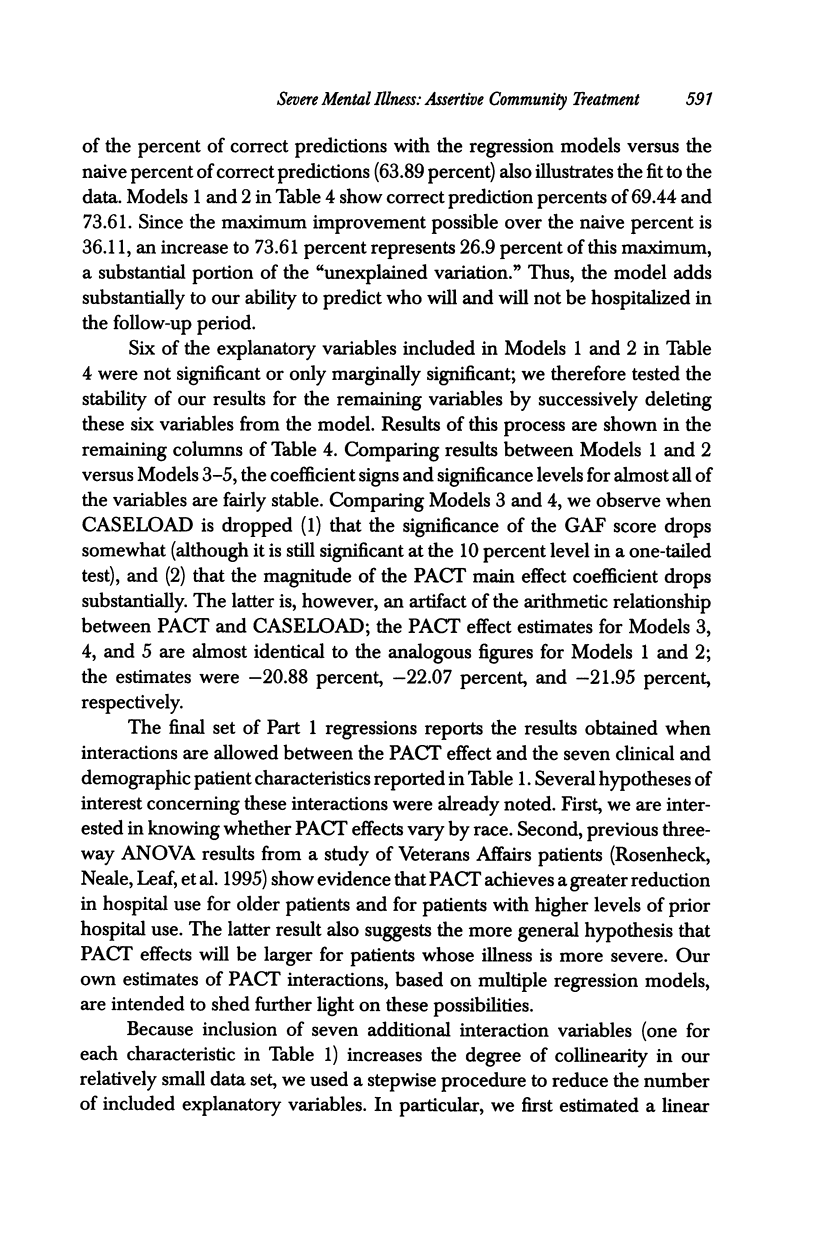


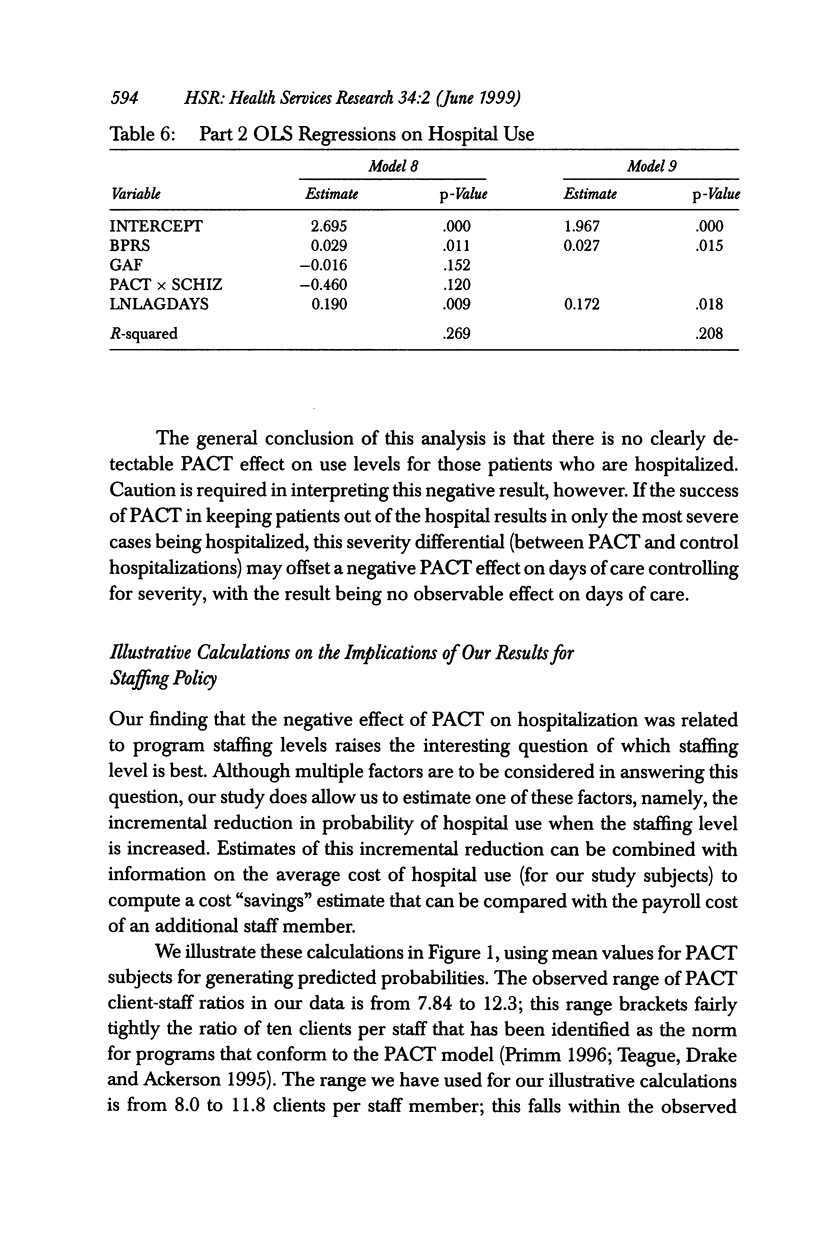
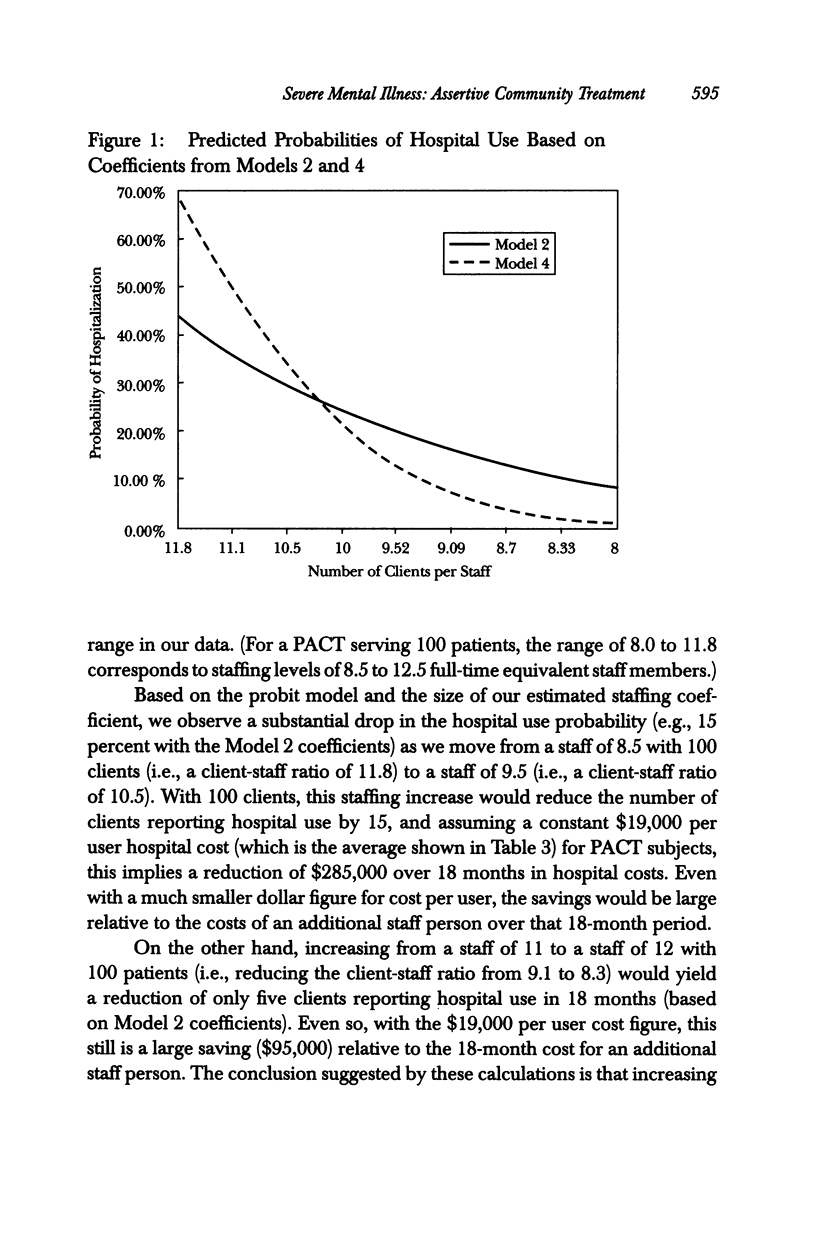
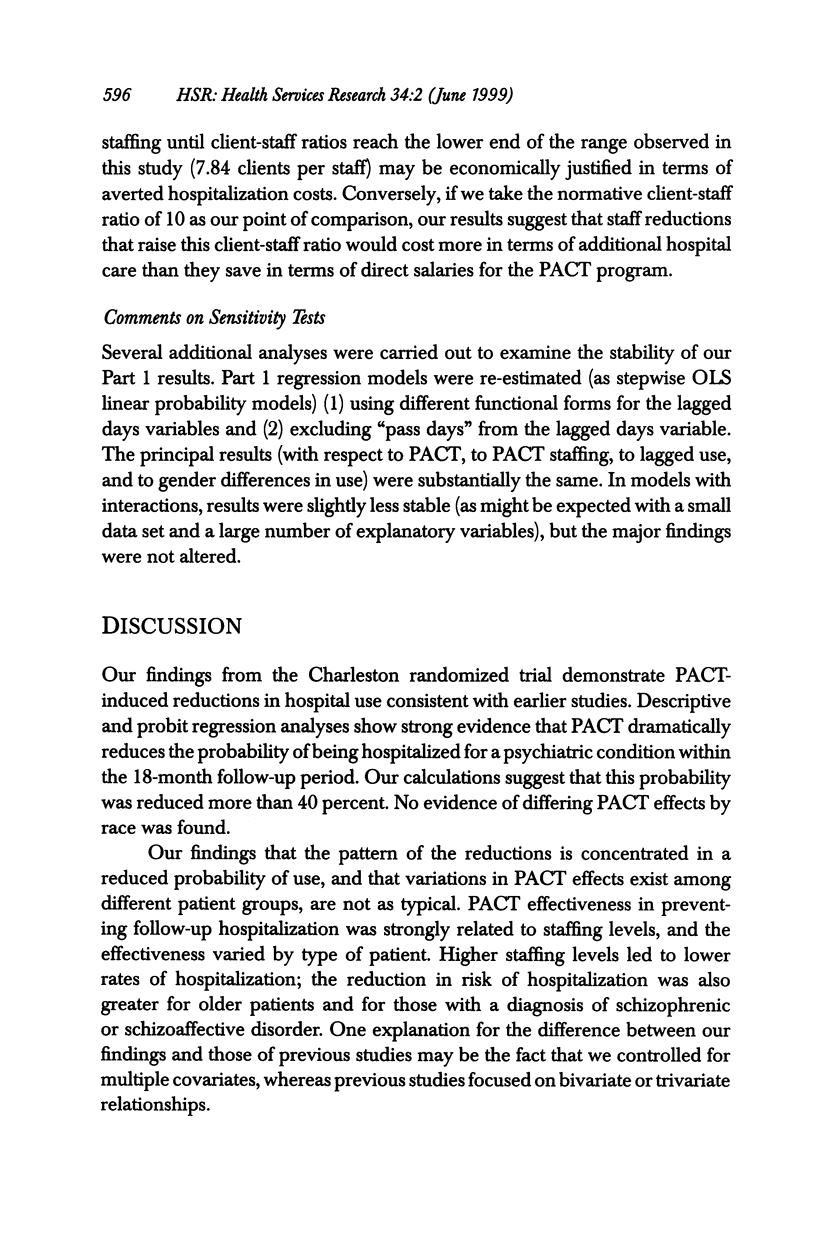



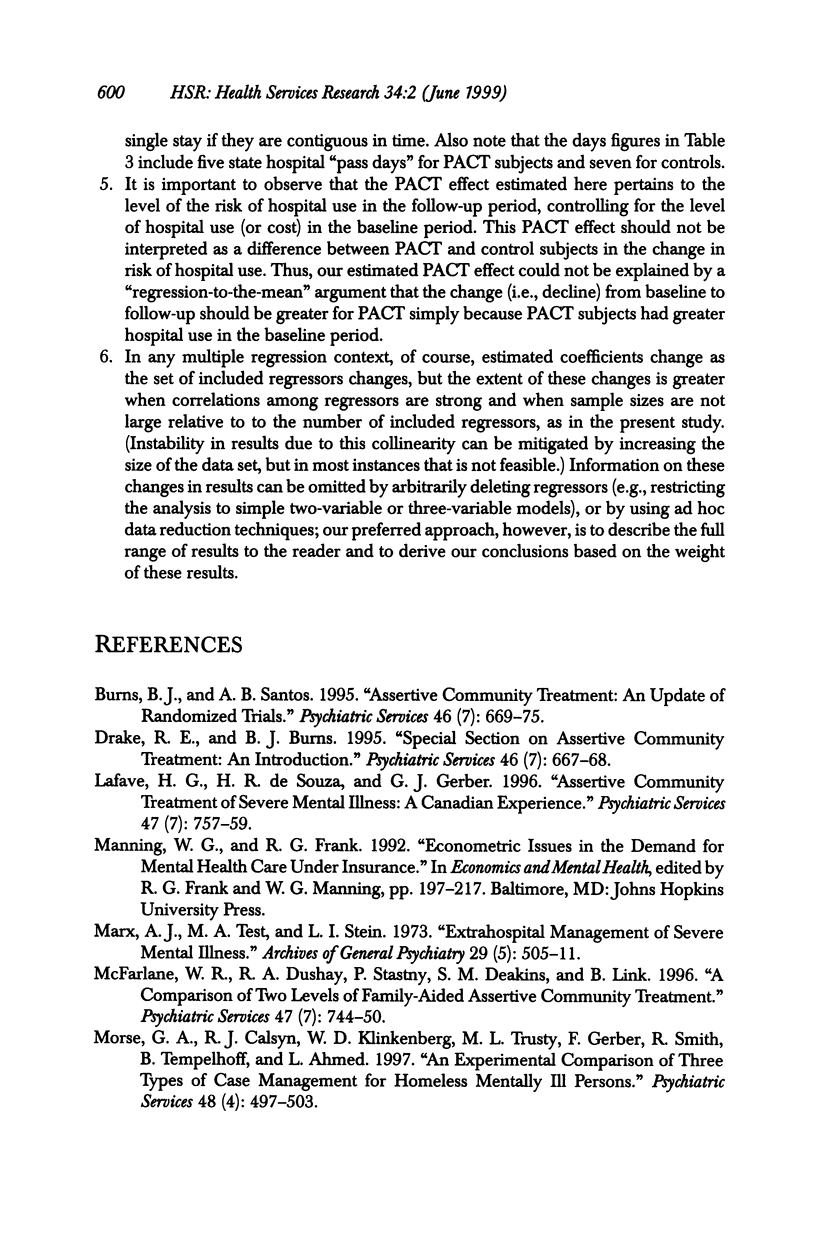
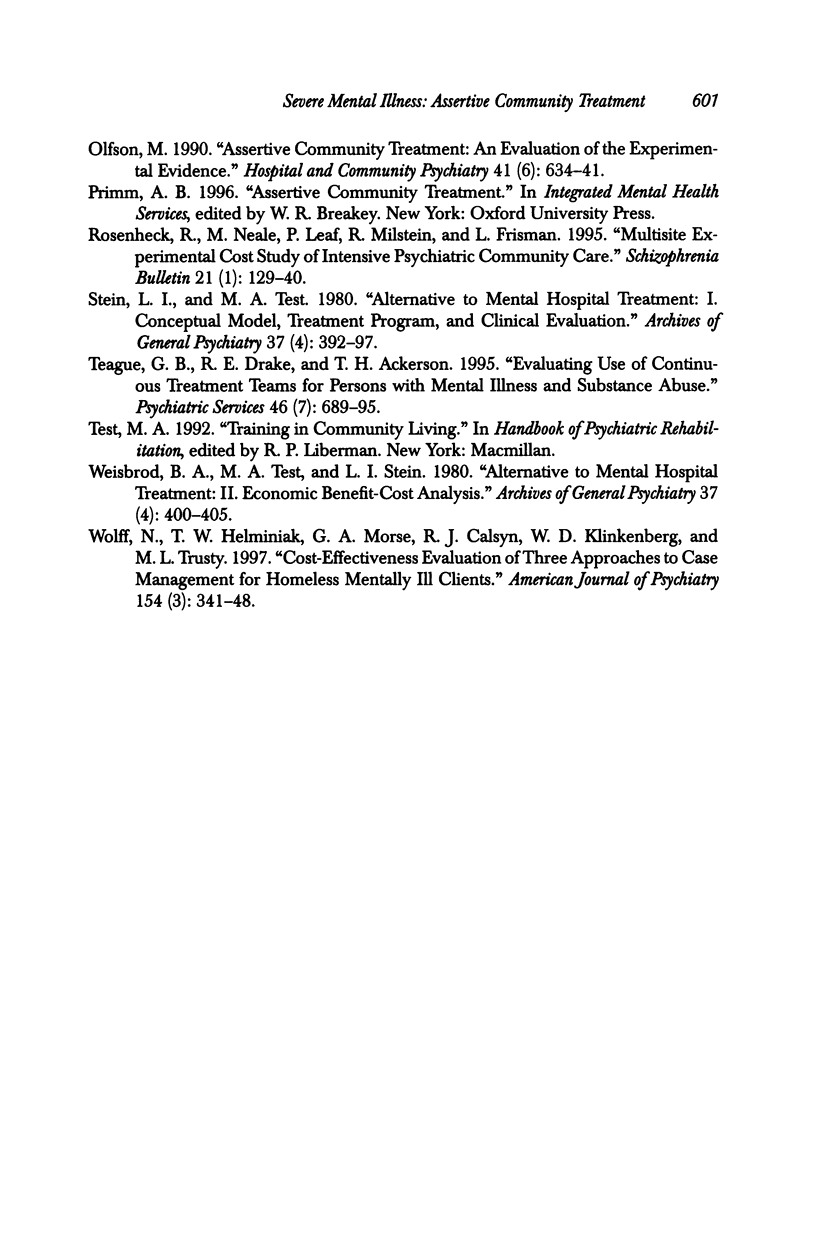
Selected References
These references are in PubMed. This may not be the complete list of references from this article.
- Burns B. J., Santos A. B. Assertive community treatment: an update of randomized trials. Psychiatr Serv. 1995 Jul;46(7):669–675. doi: 10.1176/ps.46.7.669. [DOI] [PubMed] [Google Scholar]
- Drake R. E., Burns B. J. Special section on assertive community treatment: an introduction. Psychiatr Serv. 1995 Jul;46(7):667–668. doi: 10.1176/ps.46.7.667. [DOI] [PubMed] [Google Scholar]
- Lafave H. G., de Souza H. R., Gerber G. J. Assertive community treatment of severe mental illness: a Canadian experience. Psychiatr Serv. 1996 Jul;47(7):757–759. doi: 10.1176/ps.47.7.757. [DOI] [PubMed] [Google Scholar]
- Marx A. J., Test M. A., Stein L. I. Extrohospital management of severe mental illness. Feasibility and effects of social functioning. Arch Gen Psychiatry. 1973 Oct;29(4):505–511. doi: 10.1001/archpsyc.1973.04200040051009. [DOI] [PubMed] [Google Scholar]
- McFarlane W. R., Dushay R. A., Stastny P., Deakins S. M., Link B. A comparison of two levels of family-aided assertive community treatment. Psychiatr Serv. 1996 Jul;47(7):744–750. doi: 10.1176/ps.47.7.744. [DOI] [PubMed] [Google Scholar]
- Morse G. A., Calsyn R. J., Klinkenberg W. D., Trusty M. L., Gerber F., Smith R., Tempelhoff B., Ahmad L. An experimental comparison of three types of case management for homeless mentally ill persons. Psychiatr Serv. 1997 Apr;48(4):497–503. doi: 10.1176/ps.48.4.497. [DOI] [PubMed] [Google Scholar]
- Olfson M. Assertive community treatment: an evaluation of the experimental evidence. Hosp Community Psychiatry. 1990 Jun;41(6):634–651. doi: 10.1176/ps.41.6.634. [DOI] [PubMed] [Google Scholar]
- Rosenheck R., Neale M., Leaf P., Milstein R., Frisman L. Multisite experimental cost study of intensive psychiatric community care. Schizophr Bull. 1995;21(1):129–140. doi: 10.1093/schbul/21.1.129. [DOI] [PubMed] [Google Scholar]
- Stein L. I., Test M. A. Alternative to mental hospital treatment. I. Conceptual model, treatment program, and clinical evaluation. Arch Gen Psychiatry. 1980 Apr;37(4):392–397. doi: 10.1001/archpsyc.1980.01780170034003. [DOI] [PubMed] [Google Scholar]
- Teague G. B., Drake R. E., Ackerson T. H. Evaluating use of continuous treatment teams for persons with mental illness and substance abuse. Psychiatr Serv. 1995 Jul;46(7):689–695. doi: 10.1176/ps.46.7.689. [DOI] [PubMed] [Google Scholar]
- Weisbrod B. A., Test M. A., Stein L. I. Alternative to mental hospital treatment. II. Economic benefit-cost analysis. Arch Gen Psychiatry. 1980 Apr;37(4):400–405. doi: 10.1001/archpsyc.1980.01780170042004. [DOI] [PubMed] [Google Scholar]
- Wolff N., Helminiak T. W., Morse G. A., Calsyn R. J., Klinkenberg W. D., Trusty M. L. Cost-effectiveness evaluation of three approaches to case management for homeless mentally ill clients. Am J Psychiatry. 1997 Mar;154(3):341–348. doi: 10.1176/ajp.154.3.341. [DOI] [PubMed] [Google Scholar]


